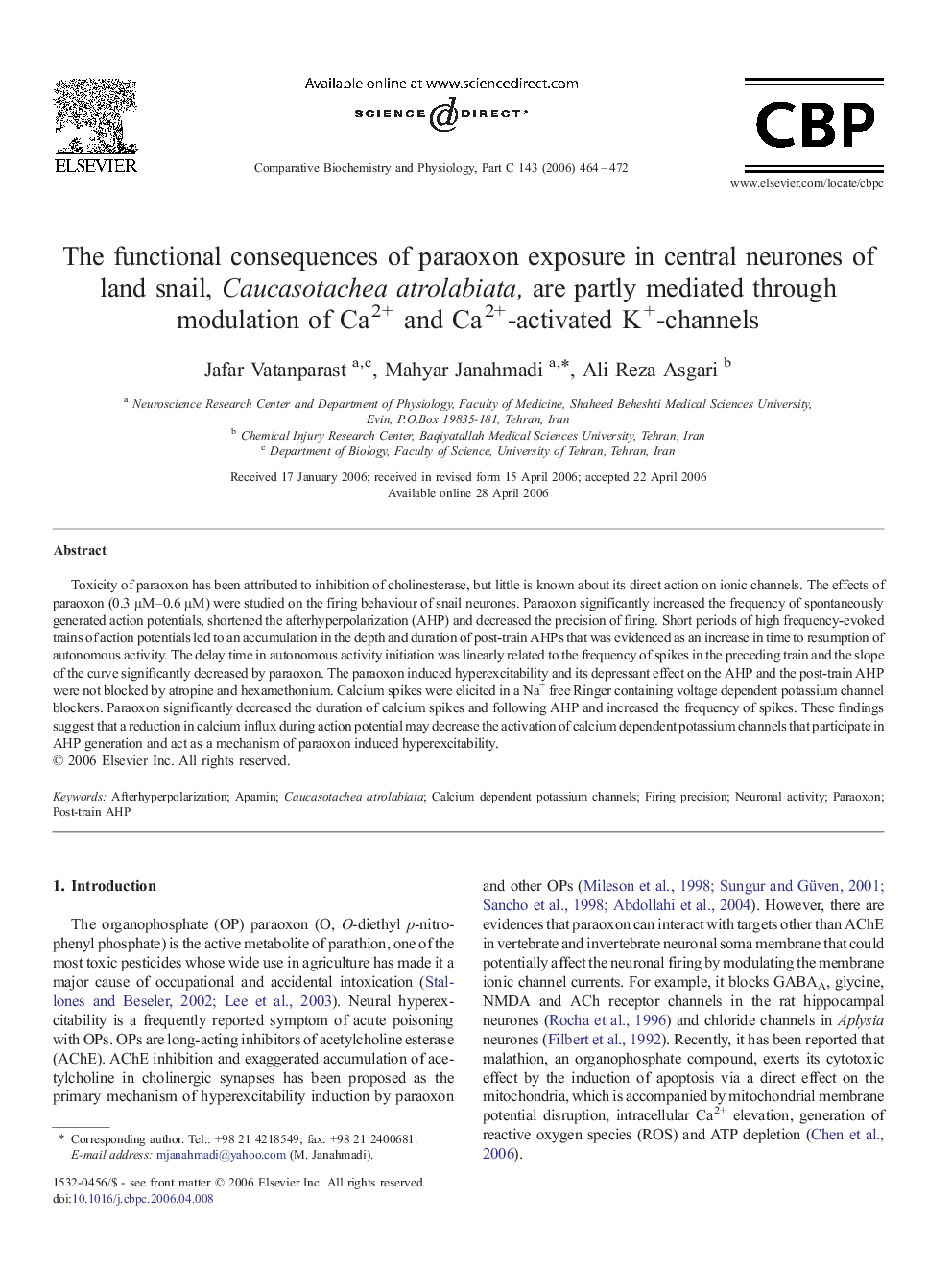| Article ID | Journal | Published Year | Pages | File Type |
|---|---|---|---|---|
| 1978141 | Comparative Biochemistry and Physiology Part C: Toxicology & Pharmacology | 2006 | 9 Pages |
Toxicity of paraoxon has been attributed to inhibition of cholinesterase, but little is known about its direct action on ionic channels. The effects of paraoxon (0.3 μM–0.6 μM) were studied on the firing behaviour of snail neurones. Paraoxon significantly increased the frequency of spontaneously generated action potentials, shortened the afterhyperpolarization (AHP) and decreased the precision of firing. Short periods of high frequency-evoked trains of action potentials led to an accumulation in the depth and duration of post-train AHPs that was evidenced as an increase in time to resumption of autonomous activity. The delay time in autonomous activity initiation was linearly related to the frequency of spikes in the preceding train and the slope of the curve significantly decreased by paraoxon. The paraoxon induced hyperexcitability and its depressant effect on the AHP and the post-train AHP were not blocked by atropine and hexamethonium. Calcium spikes were elicited in a Na+ free Ringer containing voltage dependent potassium channel blockers. Paraoxon significantly decreased the duration of calcium spikes and following AHP and increased the frequency of spikes. These findings suggest that a reduction in calcium influx during action potential may decrease the activation of calcium dependent potassium channels that participate in AHP generation and act as a mechanism of paraoxon induced hyperexcitability.
